
The DCC Decoder Programmer
Links to SPROG web page
Support & FAQ
Buy Now!
Contact

SPROG II Windows USB Driver Installation Instructions |
|
Not for SPROG IIv3, SPROG3 or SPROG-Nano users; please go back and select the appropriate instructions. Note: for Windows 7 or Windows 8 or Windows 10 users, see those instructions. On versions of Windows including XP and Vista, when the SPROG is plugged in,
Specific drivers are needed for SPROG to function correctly.
All required drivers are included in the CD supplied with SPROG, and are also available to download at http://sprog.us.com.
To uncompress these files, find them (probably in your "Downloads" folder) using the File Explorer, and then point to the item and double-click. Depending upon your Windows version, this will open the compressed zip file and show a single entry with essentially the same name as the compressed file. Do not double-click that; instead drag it out of this window onto an empty space on the Desktop (background) of your screen, where it will be easy to find in the next step! You will briefly see a small window telling you that Windows is uncompressing the files. (Alternatively you can right-click on the zip file. Depending upon your Windows version, the menu will show an "Extract all..." entry, which you should select. Then click on Extract at the bottom of that pane, and the files will be unpacked into that same location, where you will need to find it in the later steps. If you do not have this menu item, you may need to install a 'zip' program to unpack these files.) Do not accept the default auto installation, but optionally download and unzip the drivers, and then select the USB driver folder that you have unzipped. Note: you can also follow the instructions for installing the USB drivers in the SPROG User Guide, commencing on page 9. If you re-install in the future, check if updated drivers are available from the SPROG DCC download page.
Using the CD, you should specify the appropriate location during installation, as shown in the example following.
If you have downloaded the drivers, select the USB folder that you downloaded.
USB Drivers (two installations for SPROG II series 1 or 2)You will follow this sequence through to completion, and then repeat it.
This first installs the USB Port driver, and then the USB-serial interface driver
that presents the USB connection as a serial "COM" connection for JMRI to use.
You will now see a second "Found New Hardware Wizard".
This is correct, and will install the required USB to Serial drivers.
Important! SPROG Windows USB Driver IdentificationThe Virtual COM Port (VCP) drivers that you have installed connect to the USB port
and cause the SPROG to appear as though it has connected via a normal COM (serial) port.
Start the Windows Device Manager by right clicking "My Computer" on the Windows desktop and selecting properties. Select the "Hardware" tab and click on "Device Manager": 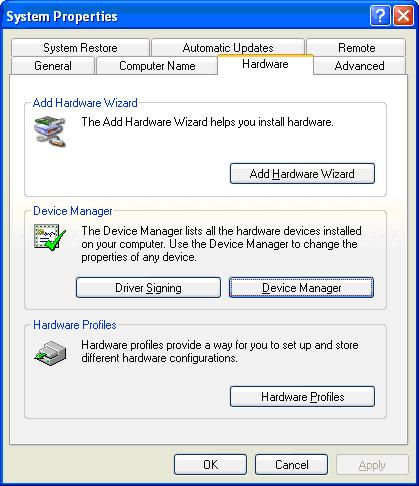
Click the "+" next to "Ports (COM & LPT) and note the COM port number assigned to SPROG Decoder Programmer. In the example below, COM3 has been assigned. This COM port must be specified in the DecoderPro preferences (next step) to allow DecoderPro to communicate with your SPROG. 
Start DecoderProThe next step is to start DecoderPro, and set preferences for this connection.
|
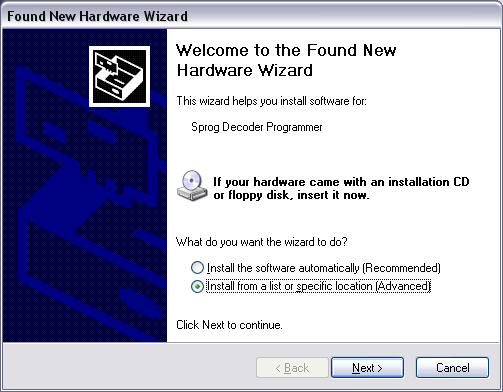
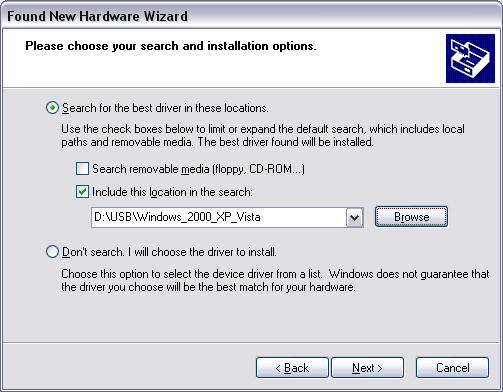
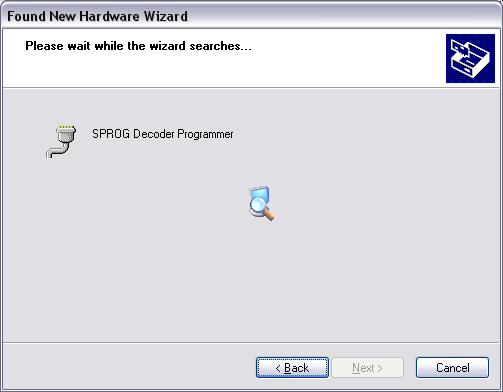
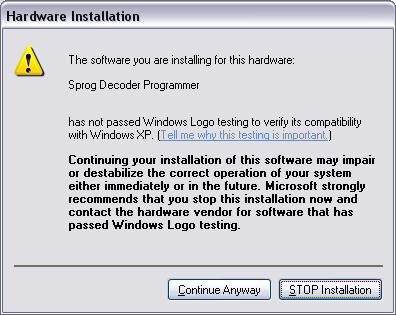
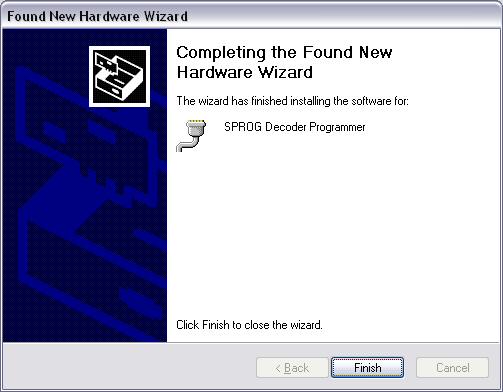
 Next an
Next an